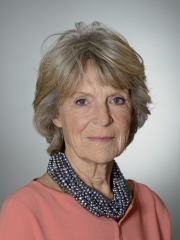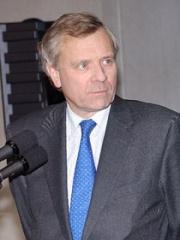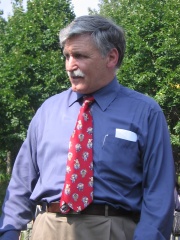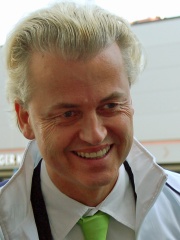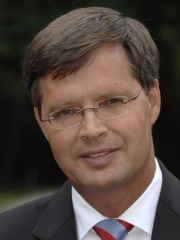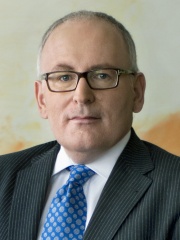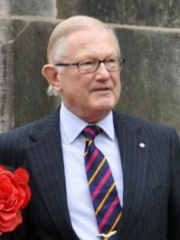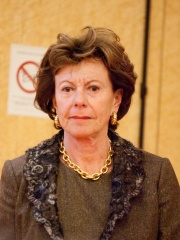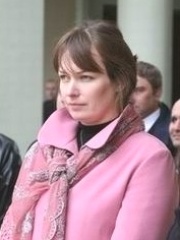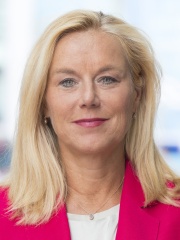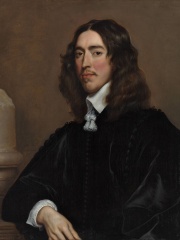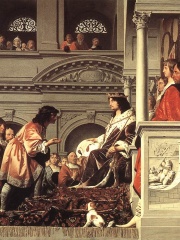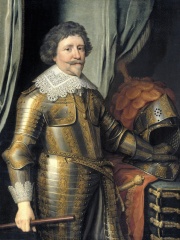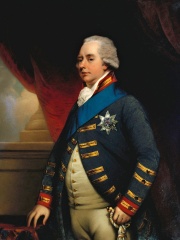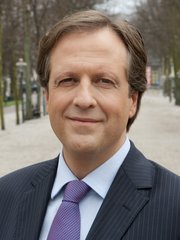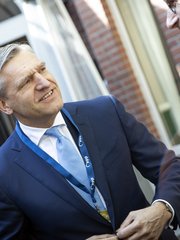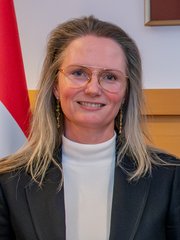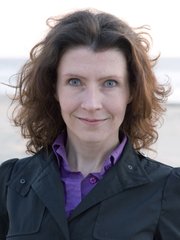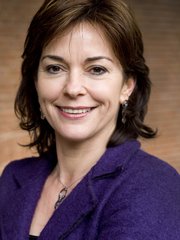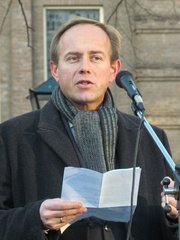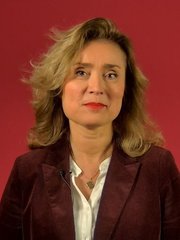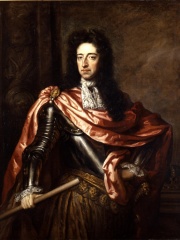
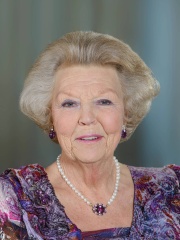
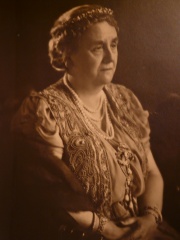
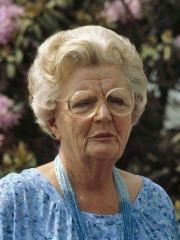
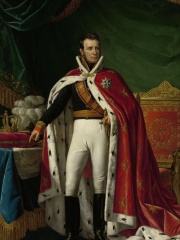
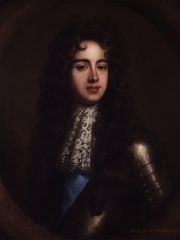
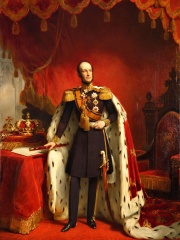
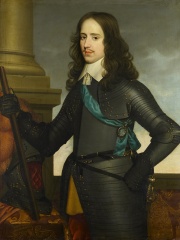
The Most Famous
POLITICIANS from Netherlands
This page contains a list of the greatest Dutch Politicians. The pantheon dataset contains 19,576 Politicians, 166 of which were born in Netherlands. This makes Netherlands the birth place of the 24th most number of Politicians behind Hungary, and Czechia.
Top 10
The following people are considered by Pantheon to be the top 10 most legendary Dutch Politicians of all time. This list of famous Dutch Politicians is sorted by HPI (Historical Popularity Index), a metric that aggregates information on a biography's online popularity. Visit the rankings page to view the entire list of Dutch Politicians.

1. William III of England (1650 - 1702)
With an HPI of 87.81, William III of England is the most famous Dutch Politician. His biography has been translated into 79 different languages on wikipedia.
William III and II (William Henry; Dutch: Willem Hendrik; 4 November 1650 – 8 March 1702), also known as William of Orange, was the sovereign Prince of Orange from birth, Stadtholder of Holland, Zeeland, Utrecht, Guelders, and Overijssel in the Dutch Republic from 1672, and King of England, Ireland, and Scotland from 1689 until his death in 1702. He ruled England, Scotland, and Ireland with his wife, Queen Mary II, and their joint reign is known as that of William and Mary. William was the only child of William II, Prince of Orange, and Mary, Princess Royal, the daughter of King Charles I of England, Scotland, and Ireland. His father died before his birth, making William III the prince of Orange from birth. In 1677, he married his first cousin Mary, the elder daughter of his maternal uncle James, Duke of York (later King James II). When the Dutch Republic was attacked by Louis XIV of France in 1672, William rose to power and became Louis's greatest obstacle. He made it his life's mission to oppose Louis and waged many campaigns against the armies of the powerful Catholic French ruler. Many Protestants heralded William as a champion of their faith. In 1685, his Catholic uncle and father-in-law, James, became king of England, Scotland, and Ireland. James's reign was unpopular with Protestants in the British Isles, who opposed Catholic Emancipation. Supported by a group of influential English political and religious leaders, William invaded England in the Glorious Revolution. In 1688, he landed at the south-western English port of Brixham; James was deposed shortly afterward. William's reputation as a staunch Protestant enabled him and his wife to take power. During the early years of his reign, William was occupied abroad with the Nine Years' War (1688–1697), leaving Mary to govern the three kingdoms alone. She died in 1694. In 1696 the Jacobites, a faction loyal to the deposed James, plotted unsuccessfully to assassinate William and restore James to the throne. In Scotland, William's role in ordering the Massacre of Glencoe remains notorious. William's lack of children and the death in 1700 of his nephew the Duke of Gloucester threatened the Protestant succession. The danger was averted by placing William and Mary's cousins, the Protestant House of Hanover, in line to the throne after Anne with the Act of Settlement 1701. Upon his death in 1702, William was succeeded in his kingdoms by Anne and as titular Prince of Orange by his cousin John William Friso.

2. Beatrix of the Netherlands (b. 1938)
With an HPI of 81.24, Beatrix of the Netherlands is the 2nd most famous Dutch Politician. Her biography has been translated into 94 different languages.
Beatrix (Beatrix Wilhelmina Armgard, Dutch pronunciation: [ˈbeːjaːtrɪks ˌʋɪlɦɛlˈminaː ˈʔɑr(ə)mɡɑrt] ; born 31 January 1938) is a member of the Dutch royal house who reigned as Queen of the Netherlands from 30 April 1980 until her abdication in 2013. Beatrix was born during the reign of her maternal grandmother, Queen Wilhelmina, and became heiress presumptive upon the accession of her mother, Queen Juliana, in 1948. Beatrix attended a public primary school in Canada during World War II, and then finished her primary and secondary education in the Netherlands in the post-war period. In 1961, she received her law degree from Leiden University. In 1966, Beatrix married Claus von Amsberg, a German diplomat, with whom she had three children. When her mother abdicated on 30 April 1980, Beatrix succeeded her as queen. Beatrix's reign saw the country's Caribbean possessions reshaped with Aruba's secession and becoming its own constituent country within the kingdom in 1986. This was followed by the dissolution of the Netherlands Antilles in 2010, which created the new special municipalities of Bonaire, Sint Eustatius, and Saba, and the two new constituent countries of Curaçao and Sint Maarten. On Koninginnedag (Queen's Day), 30 April 2013, Beatrix abdicated in favour of her eldest son, Willem-Alexander. At the time of her abdication at age 75, Beatrix was the oldest reigning monarch in the country's history.

3. Wilhelmina of the Netherlands (1880 - 1962)
With an HPI of 77.75, Wilhelmina of the Netherlands is the 3rd most famous Dutch Politician. Her biography has been translated into 69 different languages.
Wilhelmina (Dutch pronunciation: [ʋɪlɦɛlˈminaː] ; Wilhelmina Helena Pauline Maria; 31 August 1880 – 28 November 1962) was Queen of the Netherlands from 1890 until her abdication in 1948. She reigned for nearly 58 years, making her the longest-reigning monarch in Dutch history, as well as the longest-reigning female monarch outside the United Kingdom. Her reign encompassed World War I, the Dutch economic crisis of 1933 and World War II. The only surviving child of King William III of the Netherlands and Emma of Waldeck and Pyrmont, Wilhelmina ascended the throne at the age of 10 after her father's death in 1890, under her mother's regency. After taking charge of government, Wilhelmina became generally popular for maintaining Dutch neutrality during the First World War and solving many of her country's industrial problems. By that time, her business ventures had made her the world's first female billionaire as measured by U.S. dollars. Following the German invasion of the Netherlands in 1940, Wilhelmina fled to Britain and took charge of the Dutch government-in-exile. She frequently spoke to the nation over radio and came to be regarded as a symbol of the Dutch resistance. By 1948, she had returned to the liberated Netherlands and was the only survivor of the 17 European monarchs who were reigning at the time of her inauguration. Increasingly beset by poor health, Wilhelmina abdicated in favour of her daughter Juliana in September 1948 and retired to Het Loo Palace, where she died in 1962. Largely due to her status as a symbol of the Resistance, she remains reasonably popular in the Netherlands, even among the Dutch Republican movement.

4. Juliana of the Netherlands (1909 - 2004)
With an HPI of 77.40, Juliana of the Netherlands is the 4th most famous Dutch Politician. Her biography has been translated into 61 different languages.
Juliana (Dutch pronunciation: [jyliˈjaːnaː] ; Juliana Louise Emma Marie Wilhelmina; 30 April 1909 – 20 March 2004) was Queen of the Netherlands from 1948 until her abdication in 1980. Juliana was the only child of Queen Wilhelmina and Duke Henry of Mecklenburg-Schwerin. She received a private education and studied international law at the University of Leiden. In 1937, she married Prince Bernhard of Lippe-Biesterfeld with whom she had four daughters: Beatrix, Irene, Margriet, and Christina. During the German invasion of the Netherlands in the Second World War, the royal family was evacuated to the United Kingdom. Juliana then relocated to Canada with her children, while Wilhelmina and Bernhard remained in Britain. The royal family returned to the Netherlands after its liberation in 1945. Due to Wilhelmina's failing health, Juliana took over royal duties briefly in 1947 and 1948. In September 1948, Wilhelmina abdicated and Juliana ascended to the Dutch throne. Her reign saw the decolonization and independence of the Dutch East Indies and Suriname. Despite a series of controversies involving the royal family, Juliana remained a popular figure among the Dutch. In April 1980, Juliana abdicated in favour of her eldest daughter, Beatrix. Upon her death in 2004 at the age of 94, she was the longest-lived former reigning monarch in the world.
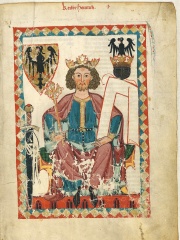
5. Henry VI, Holy Roman Emperor (1165 - 1197)
With an HPI of 76.61, Henry VI, Holy Roman Emperor is the 5th most famous Dutch Politician. His biography has been translated into 54 different languages.
Henry VI (German: Heinrich VI.; November 1165 – 28 September 1197), a member of the Hohenstaufen dynasty, was King of Germany (King of the Romans) from 1169 and Holy Roman Emperor from 1191 until his death. From 1194 he was also King of Sicily as the husband and co-ruler of Queen Constance I. Henry was the second son of Emperor Frederick Barbarossa and Beatrice I, Countess of Burgundy. Well educated in the Latin language, as well as Roman and canon law, Henry was also a patron of poets and a skilled poet himself. In 1186 he married Constance of Sicily. Henry, stuck in the Hohenstaufen conflict with the House of Welf until 1194, had to enforce the inheritance claims by his wife against her nephew Count Tancred of Lecce. Henry's attempt to conquer the Kingdom of Sicily failed at the siege of Naples in 1191 due to an epidemic, with Empress Constance captured. Based on an enormous ransom for the release and submission of King Richard I of England, he conquered Sicily in 1194; however, the intended unification with the Holy Roman Empire ultimately failed due to the opposition of the Papacy. In Sicily, Henry had a reputation for ruthless suppression of political opponents. To this day, he is sometimes given the epithet "the Cruel" (il crudele) by Italian historiographers. Henry threatened to invade the Byzantine Empire after 1194 and succeeded in extracting a ransom, the Alamanikon, from Emperor Alexios III Angelos in return for cancelling the invasion. He made the Kingdom of Cyprus and the Armenian Kingdom of Cilicia formal subjects of the empire and compelled Tunis and Tripolitania to pay tribute to him. In 1195 and 1196, he attempted to turn the Holy Roman Empire from an elective to a hereditary monarchy, the so-called Erbreichsplan, but met strong resistance from the prince-electors. Henry pledged to go on crusade in 1195 and began preparations. A revolt in Sicily was crushed in 1197. The Crusaders set sail for the Holy Land that same year but Henry died of malaria at Messina on 28 September 1197 before he could join them. His death plunged the Empire into the chaos of the German throne dispute for the next 17 years.

6. William I of the Netherlands (1772 - 1843)
With an HPI of 75.35, William I of the Netherlands is the 6th most famous Dutch Politician. His biography has been translated into 56 different languages.
William I (Willem Frederik; 24 August 1772 – 12 December 1843) was King of the Netherlands and Grand Duke of Luxembourg from 1815 until his abdication in 1840. Born as the son of William V, Prince of Orange, the last stadtholder of the Dutch Republic, and Wilhelmina of Prussia, William experienced significant political upheavals early in life. He fought against the French invasion during the Flanders campaign, and after the Batavian Revolution in 1795, his family went into exile. He briefly ruled the Principality of Nassau-Orange-Fulda before Napoleon's French troops' occupation forced him out of power. Following the defeat of Napoleon in 1814, William was invited back to the Netherlands, where he proclaimed himself Sovereign Prince of the United Netherlands. In 1815, William raised the Netherlands to a kingdom and concurrently became the grand duke of Luxembourg. His reign saw the adoption of a new constitution, which granted him extensive powers. He was a strong proponent of economic development, founding several universities and promoting trade. However, his efforts to impose the Reformed faith and the Dutch language in the mostly Catholic and partly French-speaking southern provinces, combined with economic grievances, sparked the Belgian Revolution in 1830. Unable to suppress the rebellion, William ultimately accepted Belgian independence in 1839 under the Treaty of London. William's later years were marked by dissatisfaction with constitutional changes and personal reasons, leading to his abdication in 1840 in favor of his son, King William II. He spent his final years in Berlin, where he died in 1843.

7. James Scott, 1st Duke of Monmouth (1649 - 1685)
With an HPI of 74.25, James Scott, 1st Duke of Monmouth is the 7th most famous Dutch Politician. His biography has been translated into 34 different languages.
General James Scott, 1st Duke of Monmouth, 1st Duke of Buccleuch, (9 April 1649 – 15 July 1685) was an English Army officer and courtier. Originally called James Crofts or James Fitzroy, he was born in Rotterdam in the Netherlands, the eldest illegitimate son of Charles II of England with his mistress Lucy Walter. The Duke of Monmouth served in the Second Anglo-Dutch War and commanded English troops taking part in the Third Anglo-Dutch War before commanding the Anglo-Dutch brigade fighting in the Franco-Dutch War. He led the unsuccessful Monmouth Rebellion in 1685, an attempt to depose his uncle King James II and VII. After one of his officers declared Monmouth the legitimate king in the town of Taunton in Somerset, Monmouth attempted to capitalise on his Protestantism and his position as the son of Charles II, in opposition to James, who had become a Roman Catholic. The rebellion failed, and Monmouth was beheaded for treason on 15 July 1685.

8. William II of the Netherlands (1792 - 1849)
With an HPI of 74.18, William II of the Netherlands is the 8th most famous Dutch Politician. His biography has been translated into 56 different languages.
William II (Dutch: Willem II, French: Guillaume II; 6 December 1792 – 17 March 1849) was King of the Netherlands, Grand Duke of Luxembourg, and Duke of Limburg. He reigned for nearly nine years, making him the shortest-reigning monarch in Dutch history. William II was the son of William I and Wilhelmine of Prussia. When his father, who up to that time ruled as sovereign prince, proclaimed himself king in 1815, he became Prince of Orange as heir apparent of the United Kingdom of the Netherlands. With the abdication of his father on 7 October 1840, William II became king. During his reign, the Netherlands became a parliamentary democracy with the new constitution of 1848. William II was married to Anna Pavlovna of Russia, with whom he had five children. William II was succeeded by his son William III.

9. William II, Prince of Orange (1626 - 1650)
With an HPI of 72.22, William II, Prince of Orange is the 9th most famous Dutch Politician. His biography has been translated into 41 different languages.
William II (Dutch: Willem II; 27 May 1626 – 6 November 1650) was sovereign Prince of Orange and Stadtholder of Holland, Zeeland, Utrecht, Guelders, Overijssel and Groningen in the United Provinces of the Netherlands from 14 March 1647 until his death three years later on 6 November 1650. His death marked the beginning of the First Stadtholderless Period, leading to the rise of Johan De Witt, who stayed in power for the next 22 years. His only child, William III, reigned as King of England, Scotland, and Ireland in 1689, following the Glorious Revolution. His son William also became Stadtholder of the Five Dutch Provinces in 1672, marking the end of the formentioned Stadtholderless Period.
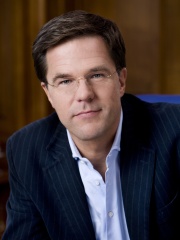
10. Mark Rutte (b. 1967)
With an HPI of 71.99, Mark Rutte is the 10th most famous Dutch Politician. His biography has been translated into 92 different languages.
Mark Rutte (Dutch: [ˈmɑr(ə)k ˈrʏtə] ; born 14 February 1967) is a Dutch politician who has served as the 14th secretary general of NATO since October 2024. He previously served as prime minister of the Netherlands from 2010 to 2024 and leader of the People's Party for Freedom and Democracy (VVD) from 2006 to 2023. Serving a total of almost 14 years, Rutte is the longest-serving prime minister in Dutch history. After originally embarking on a business management career working for Unilever, Rutte entered national politics in 2002 as a member of Jan Peter Balkenende's cabinet. Rutte won the 2006 VVD leadership election and led the party to victory in the 2010 general election. After lengthy coalition negotiations, he became prime minister of the Netherlands. He was the first self-described liberal to be appointed prime minister in 92 years. An impasse on budget negotiations led to his government's early collapse in April 2012, but the VVD's victory in the subsequent election allowed Rutte to return as prime minister to lead his second cabinet between the VVD and the Labour Party (PvdA), which became the first cabinet to complete a full four-year term since 1998. Though the VVD lost seats in the 2017 general election, it remained the largest party. After a record-length formation period, Rutte was appointed to lead his third cabinet between the VVD, Christian Democratic Appeal (CDA), Democrats 66 (D66) and Christian Union (CU). Though Rutte and his cabinet resigned in response to the Dutch childcare benefits scandal, the VVD would go on to win the 2021 general election. Rutte began his fourth term in 2022 after another record-length formation period. On 7 July 2023, he announced his government's resignation after the cabinet failed to agree on how to handle migration. Rutte IV would continue on as an outgoing cabinet, fulfilling a caretaker function and keeping the nation running until the Schoof cabinet was sworn in on 2 July 2024. For his ability to remain in office until 2024 despite various political scandals, Rutte had been referred to as 'Teflon Mark' as "nothing ever seemed to stick to him". He has also been described by the Foreign Policy columnist Caroline de Gruyter as ideologically flexible and pragmatic, willing to accommodate a broad range of political factions in order to address issues, while the Guardian correspondent Jon Henley sees in him a "managerial rather than a visionary leader".
People
Pantheon has 166 people classified as Dutch politicians born between 875 and 1987. Of these 166, 56 (33.73%) of them are still alive today. The most famous living Dutch politicians include Beatrix of the Netherlands, Mark Rutte, and Princess Irene of the Netherlands. The most famous deceased Dutch politicians include William III of England, Wilhelmina of the Netherlands, and Juliana of the Netherlands. As of April 2024, 10 new Dutch politicians have been added to Pantheon including Evelyn Wever-Croes, Alexander Pechtold, and Sybrand van Haersma Buma.
Living Dutch Politicians
Go to all RankingsBeatrix of the Netherlands
1938 - Present
HPI: 81.24
Mark Rutte
1967 - Present
HPI: 71.99
Princess Irene of the Netherlands
1939 - Present
HPI: 67.72
Jaap de Hoop Scheffer
1948 - Present
HPI: 67.46
Roméo Dallaire
1946 - Present
HPI: 67.26
Geert Wilders
1963 - Present
HPI: 66.77
Jan Peter Balkenende
1956 - Present
HPI: 65.22
Frans Timmermans
1961 - Present
HPI: 61.72
Pieter van Vollenhoven
1939 - Present
HPI: 58.57
Neelie Kroes
1941 - Present
HPI: 57.41
Sandra Roelofs
1968 - Present
HPI: 56.36
Sigrid Kaag
1961 - Present
HPI: 56.04
Deceased Dutch Politicians
Go to all RankingsWilliam III of England
1650 - 1702
HPI: 87.81
Wilhelmina of the Netherlands
1880 - 1962
HPI: 77.75
Juliana of the Netherlands
1909 - 2004
HPI: 77.40
Henry VI, Holy Roman Emperor
1165 - 1197
HPI: 76.61
William I of the Netherlands
1772 - 1843
HPI: 75.35
James Scott, 1st Duke of Monmouth
1649 - 1685
HPI: 74.25
William II of the Netherlands
1792 - 1849
HPI: 74.18
William II, Prince of Orange
1626 - 1650
HPI: 72.22
Johan de Witt
1625 - 1672
HPI: 71.44
William II of Holland
1228 - 1256
HPI: 71.29
Frederick Henry, Prince of Orange
1584 - 1647
HPI: 71.27
William V, Prince of Orange
1748 - 1806
HPI: 71.20
Newly Added Dutch Politicians (2025)
Go to all RankingsEvelyn Wever-Croes
1966 - Present
HPI: 49.91
Alexander Pechtold
1965 - Present
HPI: 47.63
Sybrand van Haersma Buma
1965 - Present
HPI: 46.53
Fleur Agema
1976 - Present
HPI: 45.22
Esther Ouwehand
1976 - Present
HPI: 45.18
Jolande Sap
1963 - Present
HPI: 44.13
Kees van der Staaij
1968 - Present
HPI: 43.72
Vera Bergkamp
1971 - Present
HPI: 43.42
Rob Jetten
1987 - Present
HPI: 42.25
Hanke Bruins Slot
1977 - Present
HPI: 41.43
Overlapping Lives
Which Politicians were alive at the same time? This visualization shows the lifespans of the 25 most globally memorable Politicians since 1700.

